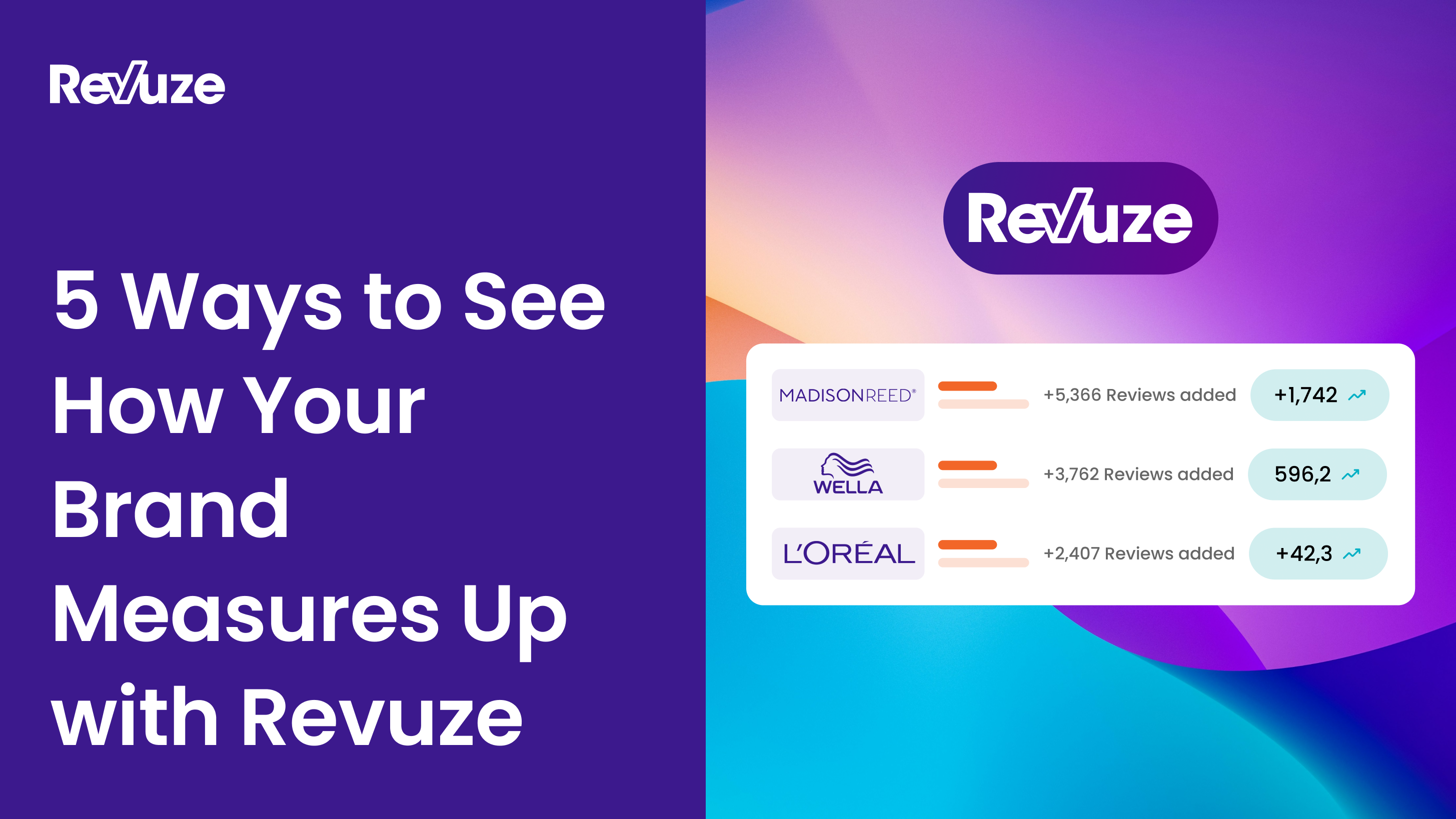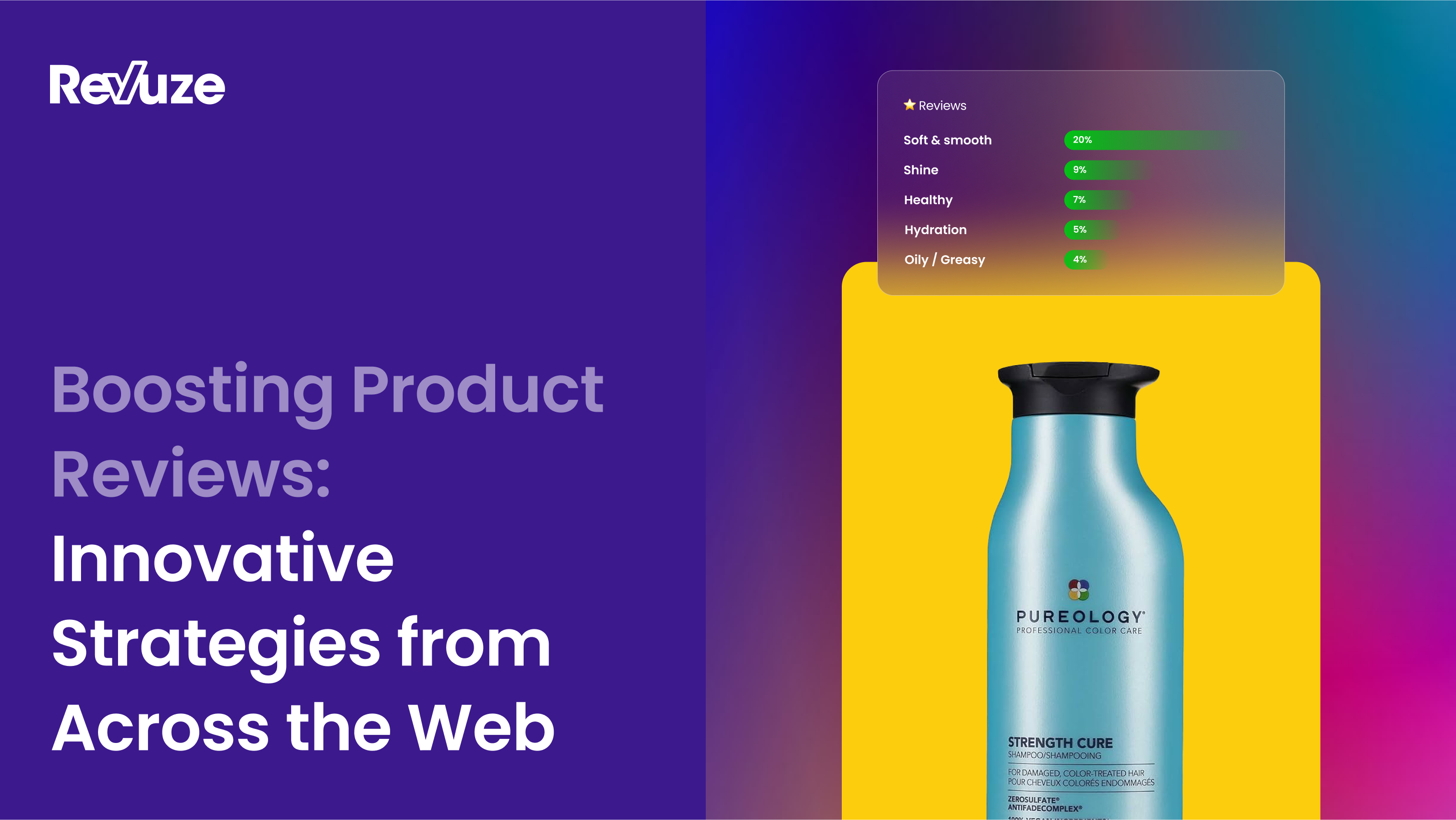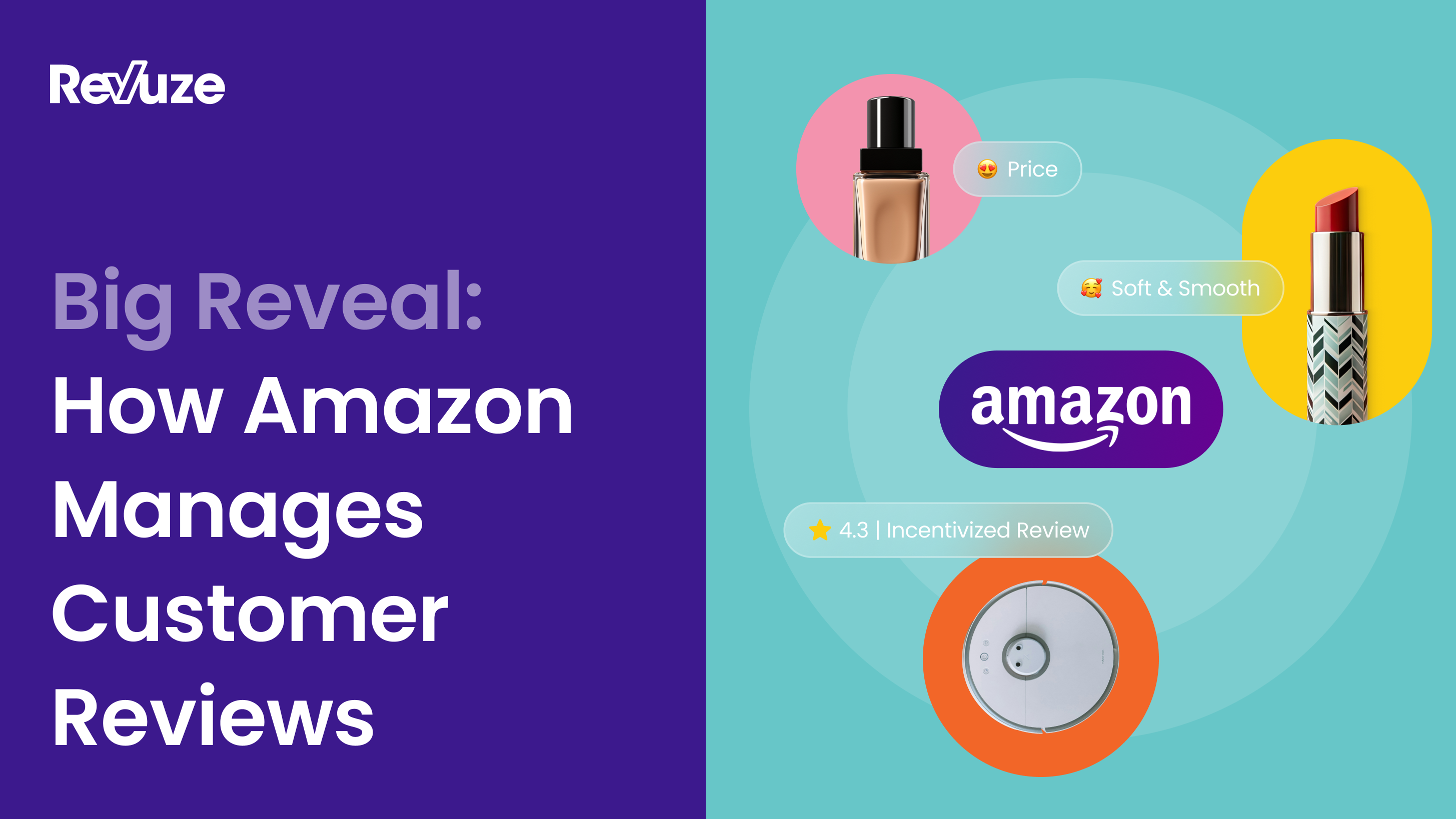
When your customers are not satisfied with the services you provide, they tend to look elsewhere for their next set of purchases. In the age of eCommerce, where alternative providers are easy to find, over 80% of customers are ready to switch companies after merely a single bad experience. This is very bad news if you want to stay in business, since it’s generally much much easier and cheaper to retain existing customers than it is to attract new ones.
While it’s expected that there will be some people walking away unsatisfied, you need to keep track of the levels of customer satisfaction you provide and act on any deficiencies you notice. There are several metrics which you can use to measure customer satisfaction, with the choice of which to use being up to you depending on your specific needs.
[banner_text text=”Get granular insights for any industry” button_text=”Learn more” button_link=”https://www.revuze.it/products/revuze-explorer/”]
What Does a Customer Satisfaction Report Aim To Do?
The ultimate goal of a customer satisfaction data analysis report is to measure customer satisfaction levels. This might seem straightforward, but depending on what it is you’re looking at specifically you will want to use different metrics.
There are a myriad of ways to get information, but all have a fatal flaw — you only get answers to the questions that you put on your survey! How specific are you supposed to be in your survey questions? The more specific your questions the more quantifiable your data will be, but overall less specific too as your customers are limited in expressing their views. Using several metrics will give you a good handle on different perspectives, but in turn will make your data harder to analyze.
Types of Customer Satisfaction Metrics
There are several different metrics you can use in order to measure your customer satisfaction score. Below we’ve listed a few of the most useful and commonly used ones, and a little bit of information about them.
Customer Satisfaction Score (CSAT)
The customer satisfaction score is a direct measure of the satisfaction customers had with a particular interaction or process they went through with your organization. It’s usually measured using a scale from one to five, with one being extremely dissatisfied and five being extremely satisfied. Those who rated the interaction a four or five out of five are counted as satisfied customers, with all others being dissatisfied. The percentage of customers who are satisfied with your service is your CSAT score.
The CSAT scale is good for fine details, as each interaction can be rated out of five to get a look at the overall quality of each step in an interaction. You should be aware, however, that there is a cognitive bias involved – people tend to fixate on a standout experience, whether good or bad – thus your responses are likely to be biased towards the extremes.
Net Promoter Score (NPS)
The net promoter score is used in cases where you want to look at the long-term customer satisfaction and/or loyalty to you and your brand. NPS looks at the overall experience a customer has had with you, rated as a percentage of those who would promote you vs those who would actively discourage others from interacting with you.
The NPS has been criticized as flawed by some due to its methodology, which actively ignores those who seem indifferent. The method assumes that, due to the human tendency to only create buzz after either a very good or very bad experience, others who those indifferent customers come into contact with will have no impact on your overall reputation.
Customer Effort Score (CES)
The customer effort score is different to the previous two metrics, as it measures not the experience but the amount of effort that a customer had to put in in order to get what they wanted out of an interaction with you. It’s usually measured in a percentage, similar to CSAT, with customers rating your interaction out of seven and those who score five or above being counted as satisfied.
CES is one of the strongest predictors of whether a customer will return to you, as many consumers seem to prefer settling for a lower quality product or service that is easier to obtain. Think about it – would you fly all the way to another country simply to obtain a slightly better quality product, or settle for one you can find in your local high street?

How To Collect Your Data
Once you’ve decided on a metric to measure, you need to decide on your method. The most common way of gaining data for customer satisfaction scores is surveys, both at the point of sale and after the fact.
The layout and style of your survey is decided for the most part by the metric you’ve chosen, however you can add more questions if you feel like it. Remember though, while shorter surveys give you less information they are more likely to be completed!
The metrics described earlier generally have the following layouts:
- CSAT: A series of questions about satisfaction levels, with answers from 1-5 (very bad to very good).
- NPS: A single question – “How likely are you to recommend this product or service” – with a rating out of 10 (not likely at all to extremely likely).
- CES: A series of questions about how easy customers found it to interact with you, with answers from 1-7 (very difficult to very easy).
Additional questions should be added on after the questions about the main metric, and making the option for additional feedback optional will definitely help when you’re gathering data. Remember, most customers will want to just tick a box and be done with your survey, so forcing them to input detailed information will cause a lot of them to simply abandon their feedback – the last thing you want.
Exactly when and how the survey is distributed will also vary by metric:
- CES focused surveys should be issued at the point of sale or immediately afterwards such that the experience is fresh in the customer’s mind.
- NPS focused surveys should be issued after several interactions with a customer, and can be done at any point so long as the method of distribution is not intrusive.
- CSAT focused surveys can be issued at any point during the sales process, and in fact can be broken down into several questions that are asked at each step in the process so that the experience of each step is examined rather than the overall experience. This is much easier to do in online spaces, where you can have feedback popups appear without disrupting the overall experience too much.
You should try to keep such questions to a minimum however, as repeatedly asking a customer to leave you feedback can get irritating and may even cause them to leave.
Analyzing Your Data: Quantitative Results
Once you have your data, the next step is to analyze it. Using software you can easily filter through thousands of responses to give overall scores, but what that software spits out is decided by you. Computers are very good at working with numbers, so this step should be quick and easy to perform.

Common ways to break down survey responses are:
- By demographic
- By location
- By which product or service is being examined
- By the number of interactions a customer has had with you
These categories will all give you more detailed insight into how your customers think. Are there differences between new and existing customers? Is there a particular product that is causing problems? In theory you can assume that repeat purchases are a good sign of customer satisfaction, but are there alternatives available in that particular sector?
Analyzing Your Data: Qualitative Results
If you’ve added space for additional write-in feedback, you’re going to get text responses. This type of feedback isn’t something that can be reduced to a set of numbers, so a more detailed analysis is needed. Luckily, the number of people leaving write-in feedback is usually small, and limited to those who have had a particularly good or particularly bad experience with you. The more detailed information that such feedback provides is more valuable in uncovering a customer’s motivations and feelings than a single tickbox.
Computers can help you with your qualitative feedback in some respects. Text mining and other tools can help separate out those pieces of feedback that are similar, adding some order to the madness that is raw text data. You can also use sentiment analysis to extract the intended meaning of the text rather than simply filtering by the words a review contains, though you will require specialized software to do so.
Overall, quantitative data tends to show you where you stand and what your customers think of you, while qualitative data tells you why that is the case. It’s not perfect by any means, but you can only work with the information customers are willing to give you.
Visualizing Your Results
There are plenty of ways to visualize results. Bar charts, pie charts, simple graphs – all of them have a place in presenting your customer satisfaction data and can be useful at times. Overall, your aim when presenting the data is simple – make sure that the general results can be understood at a glance, with the more specific results being available when you examine them more closely.
What you want to examine determines your presentation. Want to take a look at customer satisfaction before and after a new protocol or procedure is implemented? A score vs time graph is probably your best bet. Do you want to compare across demographics? Bar charts are your friend. Want to produce a simple chart that will give the current satisfaction rates at a glance? Pie charts are delicious.

[banner_text text=”See Revuze’s platform in action” button_text=”Book a demo” button_link=”https://www.revuze.it/book-a-demo/”]
Additional: Churn Rate
Another potential source of information is your churn rate, which is the percentage of customers that cease interactions with you without leaving any kind of review or rating as feedback. There will always be those who simply don’t want to leave reviews – they see it as wasting their time and don’t want to provide feedback to an organization they’re dissatisfied with.
If you have a high churn rate, it’s safe to say that you have issues. By taking a look at when and where the customers leave you, you can hazard a guess as to what the underlying issues might be. You won’t be able to get as detailed information as if you had feedback on the topic, but it’s better than nothing at all. Your churn rate can also be used to verify the results of other forms of customer satisfaction analysis, making sure that their predictions match up with reality.
Of course, this isn’t applicable to every industry. When buying a car, for example, a high churn rate would be seen as successful as the customer has settled and is satisfied with the car that the dealership has provided them with. This is something that’s true for every metric we’ve described today, so keep in mind how the specifics of your industry might make things vary.
Additional: CSAT & DSAT
CSAT (Customer Satisfaction Score) has a counterpart in DSAT, or Customer Dissatisfaction Score. While you may think that is simply the inverse of the CSAT score, keep in mind that the CSAT score takes into account only those customers who are deemed “satisfied” and ignores those who are indifferent.
The DSAT is the percentage of customers who are actively dissatisfied with their interactions with you.It’s taken from the same survey as the CSAT, and takes those who answer 1 or 2 out of 5 to be “dissatisfied”. In this way, it counts the truly dissatisfied customers rather than those who merely seem indifferent to their experiences.
The DSAT is important to keep an eye on, some might say even more so than CSAT. It actively identifies problem areas and reasons why you might be losing customers. From the data that the DSAT provides you should be able to perform a root cause analysis and improve the underlying issues rather than simply attempting to smooth over surface level problems.
 All
Articles
All
Articles Email
Analytics
Email
Analytics









 Agencies
Insights
Agencies
Insights